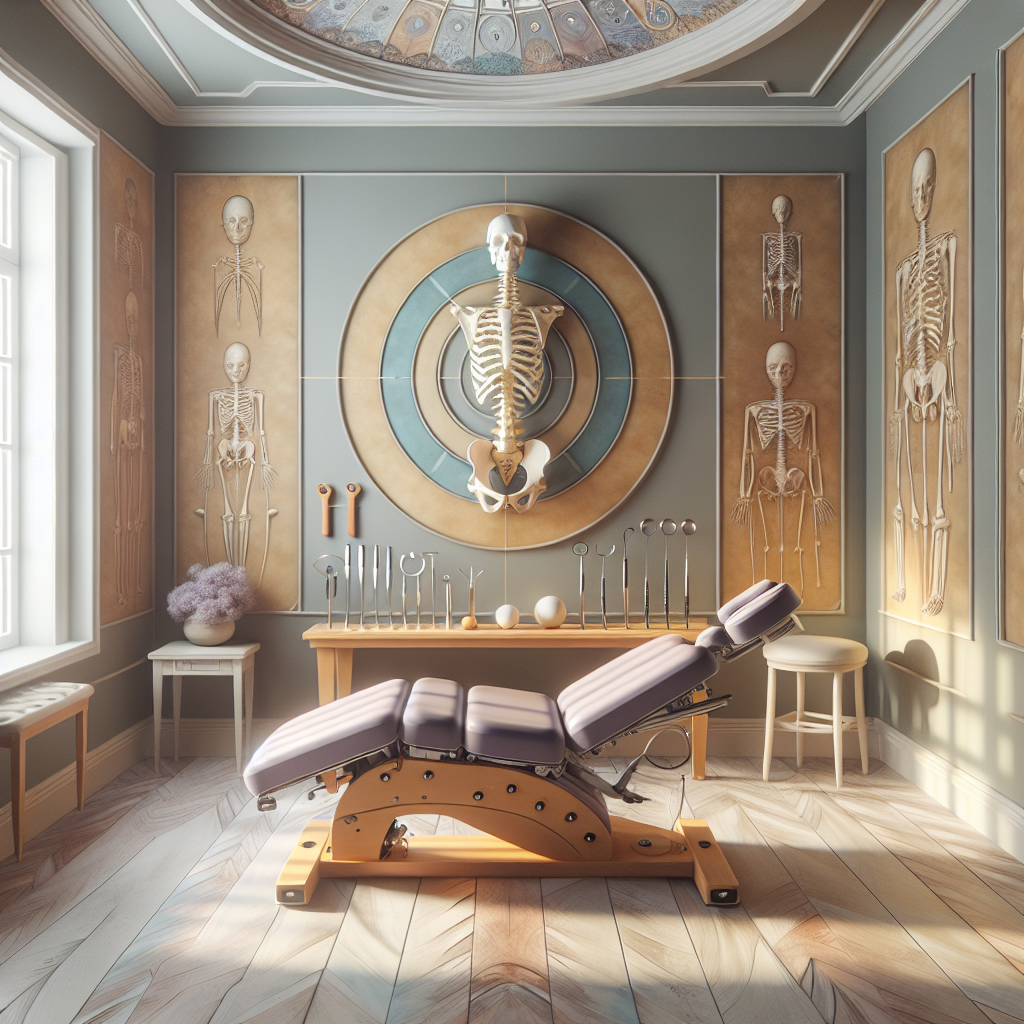
Chiropractic Treatments For Scoliosis Improve Quality Of Life
The challenges of living with a spinal deformity can be significant, impacting daily activities and comfort levels. Chiropractic treatments utilize a hands-on approach to enhance spinal alignment, providing relief from various symptoms associated with this condition.
Regular sessions often lead to effective back pain relief, as practitioners work on correcting posture and addressing specific imbalances.
Many patients experience a sense of improved well-being through targeted vertebral adjustments designed to alleviate tension.
By emphasizing spinal health, care from professionals like those at Americana Injury Clinic contributes positively to overall scoliosis management. Consequently, numerous individuals report notable enhancements in their quality of life, making these therapies a worthwhile option for those affected.
Click here to learn more about: chiropractor houston.html
Understanding Scoliosis Management
Successful approaches to managing spinal disorders rely on the integration of early diagnosis and ongoing monitoring. Incorporating therapeutic exercises is significant for enhancing flexibility and strength within the spine.
Regular assessments help identify shifts in curvature, allowing for timely adjustments in treatment plans.
Collaborating with healthcare professionals fosters a comprehensive approach to care.
Often, this strategy combines alternative medicine and traditional techniques tailored to individual needs. Keeping communication channels open with specialists encourages effective management throughout different phases of life.
Understanding the importance of spinal alignment will further support overall well-being.

Importance Of Spinal Alignment
Proper posture can significantly influence overall health and well-being. Maintaining balance within the spine is especially important for individuals dealing with scoliosis.
Misalignment often exacerbates symptoms, leading to increased discomfort and challenges in daily activities.
Chiropractic adjustments play a vital role in correcting these deviations, ultimately promoting better body mechanics.
Enhanced alignment not only makes routine tasks easier but also contributes to improved organ function and nervous system efficiency. Addressing these concerns forms a foundation for effective pain management strategies, which can substantially boost the quality of life for those affected by scoliosis.
Transitioning from spinal health, exploring various back pain relief techniques can further support individuals in their journey toward wellness.
Posture and Scoliosis
- Proper spinal alignment can reduce discomfort and improve daily functioning for individuals with scoliosis.
- Chiropractic adjustments have been shown to effectively correct spinal misalignments, enhancing overall body mechanics.
- Improved spinal alignment contributes to better organ function and increased efficiency of the nervous system.
- Effective pain management strategies, including posture correction, can significantly enhance the quality of life for those with scoliosis.
Back Pain Relief Techniques
Addressing discomfort in the back involves exploring a variety of effective methods. Chiropractic care serves as a beneficial approach to enhance spinal health and promote overall well-being.
Each patient is evaluated through an orthopedic assessment to establish personalized treatment plans, targeting the root causes of pain.
Among the common chiropractic treatments, spinal manipulation plays a vital role in restoring functional movement and relieving tension.
Incorporating physical rehabilitation through tailored exercises supports long-term pain management. Positive patient testimonials and case studies illustrate notable improvements in their experiences, showcasing how these approaches can alleviate discomfort.
As one transitions into considering posture correction strategies, it is helpful to reflect on what to expect from chiropractic care.
Posture Correction Strategies
Maintaining optimal body alignment is essential for overall health and comfort. Effective strategies incorporate various methods, starting with necessary adjustments in ergonomics to enhance workspace comfort.
Assessing chair height and the placement of computer screens can significantly reduce strain on the body.
Utilizing supportive accessories, such as lumbar rolls, aids in promoting proper spinal alignment and contributes to improved biomechanics.
Alongside these adjustments, corrective exercises play an instrumental role. Strengthening the core not only fosters better support for the body but also enhances musculoskeletal health, which is important for daily functioning.
Adding flexibility exercises into the routine helps alleviate tension and encourages mobility. These techniques are particularly beneficial for individuals experiencing issues related to posture, including the potential progression of scoliosis.
The interconnectedness of posture and overall well-being cannot be overstated, as each strategy works collectively to foster positive outcomes.
Body Alignment and Health
- Proper ergonomics can reduce the risk of musculoskeletal disorders by up to 60%.
- Strengthening core muscles can improve posture and reduce back pain in 70% of individuals.
- Flexibility exercises can enhance mobility and decrease tension, contributing to a 30% increase in overall comfort.
- Maintaining good posture can lead to improved respiratory function and increased energy levels.
Vertebral Adjustment Benefits
Maintaining a healthy spine is fundamental to overall wellness. Adjustments aimed at achieving structural balance can significantly influence daily life.
Correcting misalignments often alleviates discomfort, leading to enhanced mobility and physical function.
Such interventions promote health promotion by optimizing nerve function, which is essential for communication between the brain and vital organs.
Improved interactions within the body contribute to enhanced wellbeing, while regular sessions with a qualified scoliosis specialist can bolster long-term structural integrity. Effective joint mobilization practices can complement these adjustments, ensuring a comprehensive approach to spinal health.
The transition from posture correction strategies to holistic care for scoliosis highlights the interconnected nature of these practices.
Holistic Care For Scoliosis
Addressing the complexities of scoliosis involves a comprehensive strategy that prioritizes both the physical and emotional aspects of health. Incorporating rehabilitation techniques into treatment plans allows for a variety of therapies designed to meet unique patient requirements.
When various therapies are combined, individuals frequently experience improvements in their overall well-being and a reduction in discomfort.
This inclusive approach fosters deeper involvement with care strategies, encouraging self-empowerment throughout the healing process.
Options like soft tissue therapy and spinal decompression can significantly relieve discomfort while promoting better alignment. As patients explore these chronic pain solutions, they often uncover methods that enhance their journey toward improved wellness.
Transitioning from the benefits of vertebral adjustments, individuals may find that therapeutic exercises for strengthening can further complement their holistic care strategy.
| Aspect of Care | Benefits |
|---|---|
| Rehabilitation Techniques | Meet unique patient requirements |
| Combination of Therapies | Improves overall well-being and reduces discomfort |
| Soft Tissue Therapy | Relieves discomfort and promotes better alignment |
| Therapeutic Exercises | Strengthens and complements holistic care strategy |
Therapeutic Exercises For Strengthening
Engaging in specific movement strategies can significantly enhance recovery for individuals affected by scoliosis. Importance of Physical Activity: Regular exercise promotes spinal flexibility and muscle balance while contributing to pain management and improved mobility.
Recommended Therapeutic Exercises: Core strengthening activities like planks and bridges serve to stabilize the spine effectively.
Stretching practices, including yoga, enhance posture and reduce tension throughout the body.
Always prioritize safety by undergoing a functional assessment with a healthcare provider before beginning any exercise program. With individualized care plans, patients can address their unique needs, fostering an empowered journey toward recovery.
Alternative Medicine Options
Exploring various therapeutic approaches can enhance overall spinal well-being. Among these, acupuncture and acupressure can effectively alleviate discomfort while improving flexibility.
Research supports the notion that these therapeutic modalities, when combined with chiropractic care, can bolster the benefits of conventional treatments.
Massage therapy contributes to muscle relaxation and pain reduction, thus fostering spinal health awareness.
Specific techniques aim to address tight muscles, offering targeted relief for scoliosis patients.
Incorporating yoga and Pilates into a routine can yield significant advantages, with select poses designed to promote spinal alignment.
By integrating these practices into a patient-centered care framework, individuals can achieve a more holistic treatment plan, ultimately supporting long-term health and wellness.
Spinal Well-Being
- Acupuncture and acupressure can effectively alleviate discomfort and improve flexibility.
- Research indicates that combining acupuncture and chiropractic care enhances the benefits of conventional treatments.
- Massage therapy promotes muscle relaxation and pain reduction, supporting spinal health.
- Incorporating yoga and Pilates can significantly improve spinal alignment through targeted poses.
Patient Education On Scoliosis
Knowledge is a powerful tool that can significantly impact how individuals manage their condition. Education regarding spinal deformities encompasses recognizing the definitions and characteristics associated with them, along with emphasizing the role of early detection for effective health optimization.
Regular monitoring can help track changes that may arise over time.
Patient support plays an integral role, as resources such as educational websites and brochures offer insights that can empower individuals.
Joining support groups enhances the experience by fostering connections with others navigating similar journeys.
The involvement of healthcare providers is paramount; they can provide therapeutic intervention through personalized treatment plans tailored to each patient’s unique needs.
Questions to explore include what to inquire about from healthcare professionals and how to take charge of one’s health. Considering various pain relief strategies can also be beneficial as individuals pursue their wellness goals
Wellness Strategies For LongTerm Health
Adopting sustainable lifestyle changes can be transformative for overall well-being. Implementing strategic adjustments in daily habits can significantly impact spinal wellness.
Focus on incorporating regular physical activity, which strengthens muscles and promotes flexibility.
This can lead to better posture and reduced pain.
Integrating somatic education into your routine plays a significant role in understanding body mechanics. Engaging in mindful practices, such as yoga or Pilates, enhances functional integration of movement and supports joint health.
Proper ergonomics at work and home are also crucial for maintaining a healthy spine. Staying hydrated and maintaining a balanced diet fortifies overall bodily functions.
Consistent, small adjustments can result in substantial improvements in long-term health interventions.
Sustainable Lifestyle Changes
- Regular physical activity can reduce the risk of chronic pain and improve overall spinal health.
- Somatic education techniques can enhance body awareness and improve movement efficiency.
- Practicing yoga or Pilates has been shown to increase flexibility and support joint health.
- Proper ergonomics can reduce the likelihood of developing musculoskeletal disorders.
Chiropractic Care After An Auto Injury Is Essential
Chiropractic Treatments For Sciatica Enhance Pain Relief
